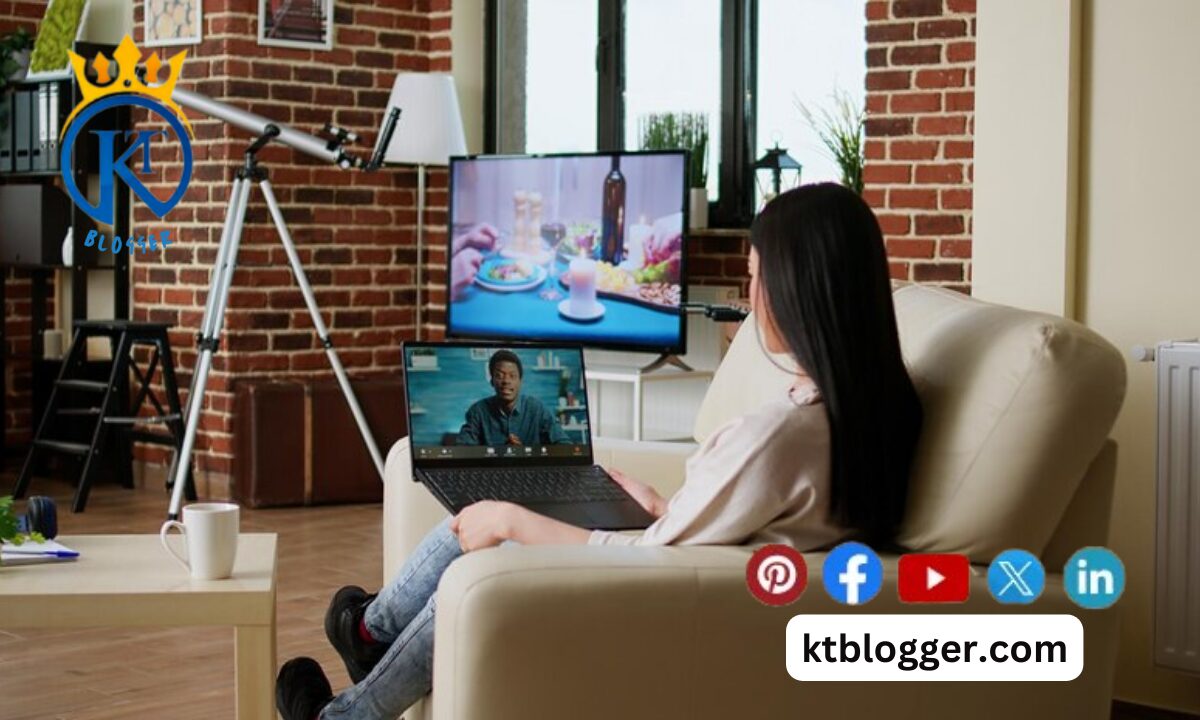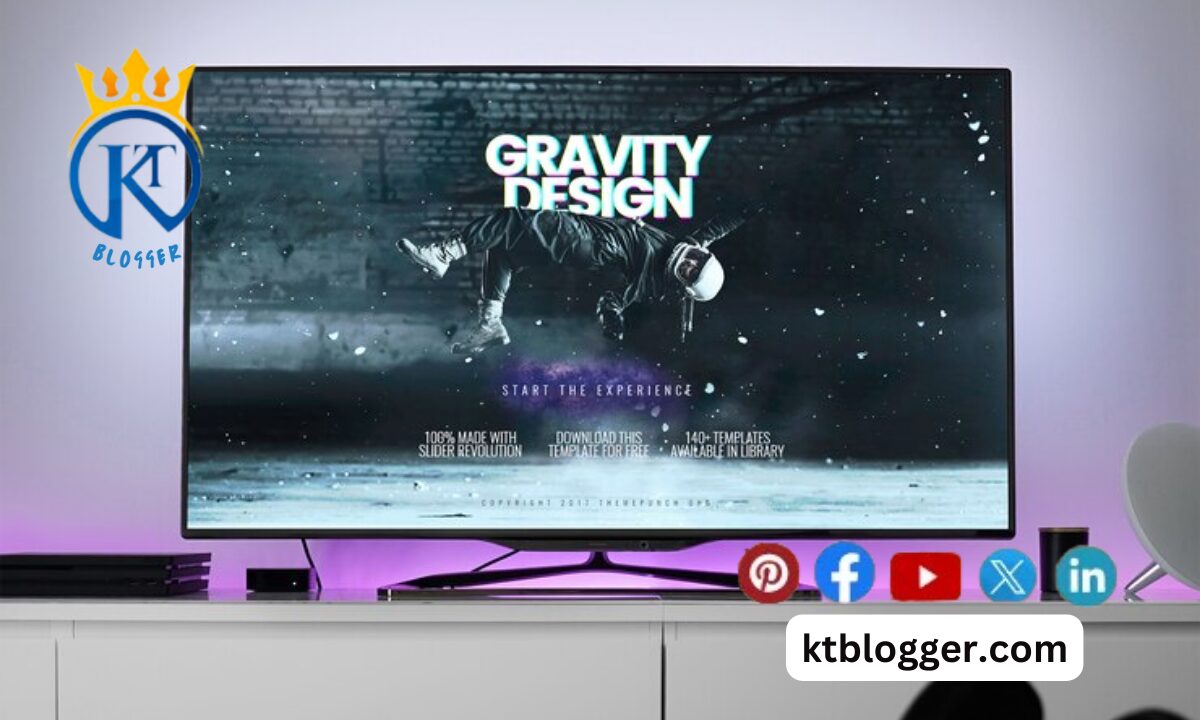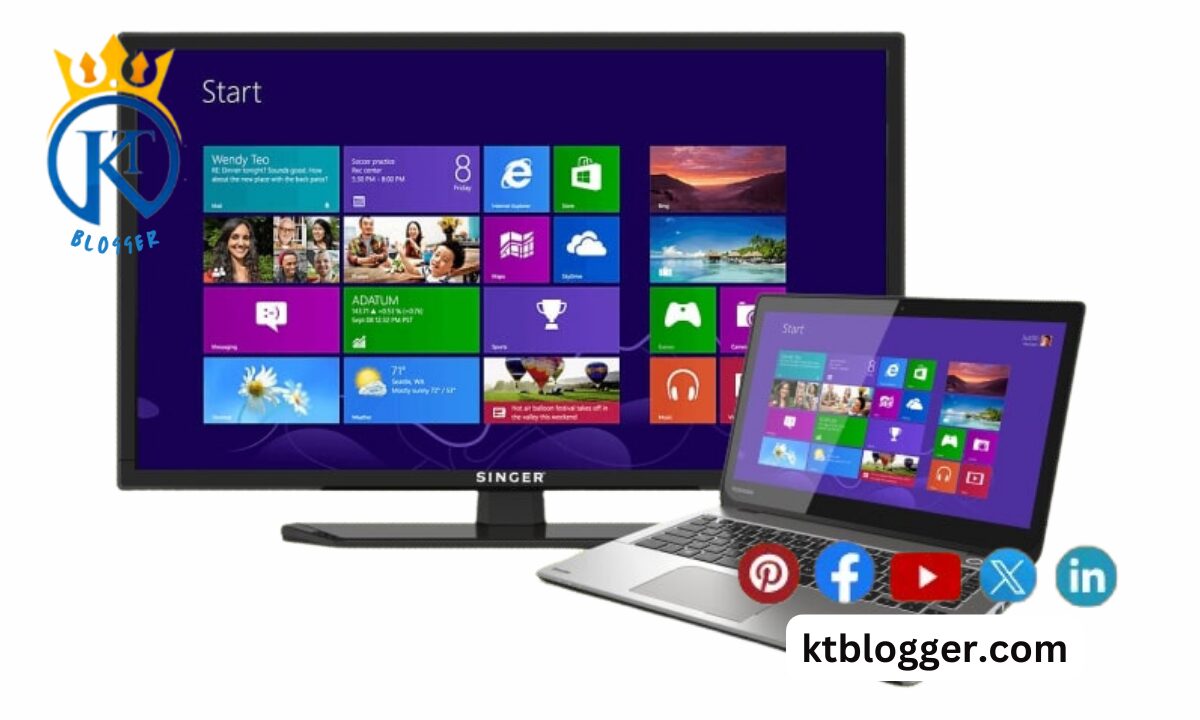Connecting your laptop to your TV can transform your regular living room into a fantastic entertainment center or a big workspace. It’s easy to do and opens up a lot of options, like watching movies on a big screen or giving presentations. This guide will show you how to connect laptop to TV, whether you’re good with technology or just starting.
To connect your laptop to a TV, there are several methods available based on your preferences and equipment. For a wireless connection, you can use Wi-Fi Direct or Chromecast. If your laptop has an HDMI port, simply connect it to the TV using an HDMI cable. For older laptops with VGA ports, you can use a VGA cable. Newer laptops with USB-C ports can connect to the TV with a USB-C to HDMI adapter.
Additionally, you can mirror your laptop screen or extend your display for various purposes such as casting videos or photos, playing games, or using the TV as a monitor. These options provide flexibility and convenience for enjoying content on a larger screen.
So, let’s start and discover how to connect laptop to TV.
Content
- 1 1. How to Connect Laptop to TV?
- 2 2. Optimization Tips: Making It Perfect
- 3 3. Troubleshooting: Common Issues and Fixes
- 4 4. Advanced Features: Taking Your Connection to the Next Level
- 5 5. Alternative Connection Methods: When HDMI Isn’t an Option
- 6 6. Content Casting: Projecting Specific Content
- 7 7. Choosing the Right Connection Method: A Quick Guide
- 8 8. Unleashing the Potential: What You Can Do
- 9 FAQs
- 10 Summing Up
1. How to Connect Laptop to TV?
To connect your laptop to a TV, there are several methods available, catering to different needs and preferences. For wireless connectivity, consider using Miracast or Apple AirPlay if your TV supports it.
Alternatively, you can utilize HDMI ports for a wired connection, ensuring high-quality audio and video output. Ensure your TV input source is set correctly, update graphics drivers, and check for software compatibility if facing any issues.

Before you begin, make sure you have everything you need:
- Your Laptop: Most modern laptops come with HDMI ports, but if yours doesn’t, don’t worry. We have alternatives.
- Your Television: Most modern TVs also have HDMI ports. If you’re unsure, check your TV’s manual.
- An HDMI Cable: This cable is crucial for transmitting audio and video signals between your laptop and TV. Make sure it’s long enough to reach comfortably.
Wired Connection: Easy and Reliable
Connecting your laptop to your TV with an HDMI cable is simple and dependable. Here’s how:
Step-by-Step Guide:
- Power Up: Ensure both your laptop and TV are switched on and ready.
- Cable Connection: Plug one end of the HDMI cable into your laptop’s HDMI port and the other end into your TV’s HDMI port.
- Input Selection: Use your TV remote to navigate to the input/source menu and select the HDMI port you connected your laptop to.
- Adjust Settings (if needed): If the display doesn’t automatically adjust, tweak the resolution in your laptop’s settings to match your TV’s native resolution.
Wireless Connection: No Cables, No Fuss
If you prefer a cable-free setup, you can use wireless options like Miracast for Windows or AirPlay for Apple devices.
Here’s How:
Windows with Miracast:
- Press the Windows key + P on your keyboard.
- Select “Connect to a wireless display.”
- Choose your TV from the list and follow any on-screen prompts.
Apple with AirPlay:
- Ensure your Apple device and TV are on the same Wi-Fi network.
- Open the content you want to display on your TV and tap the AirPlay icon.
- Select your TV from the list and enjoy wirelessly mirroring your screen.
2. Optimization Tips: Making It Perfect
Now that you’ve successfully connected your laptop to your TV, you may want to explore additional features and settings to enhance your viewing experience. Here are some optimization tips to consider:
1. Screen Resolution
Depending on your TV’s resolution and aspect ratio, you may need to adjust your laptop’s display settings to ensure the best picture quality. Most modern laptops and TVs will automatically adjust the resolution to match, but you can manually adjust these settings if needed.
2. Audio Configuration
HDMI cables typically transmit both audio and video signals, but you may need to adjust audio settings on your laptop to ensure sound is routed to your TV. Access your laptop’s sound settings and select your TV as the default audio playback device.
3. Explore Display Options
Depending on your laptop’s capabilities, you may have the option to extend your display onto the TV rather than simply mirroring it. This feature allows you to use your TV as a secondary monitor, providing additional screen real estate for multitasking.
4. Calibrate Your TV
For the best possible picture quality, consider calibrating your TV’s display settings. Most TVs offer built-in calibration tools that allow you to adjust parameters such as brightness, contrast, and color saturation. Alternatively, you can use third-party calibration tools for more advanced adjustments
3. Troubleshooting: Common Issues and Fixes

If you run into any problems, here’s how to troubleshoot:
Common Problems:
- Poor Signal Quality: Check HDMI cable connections and try different ports.
- No Audio: Ensure audio settings are correct on both your laptop and TV.
- Interference: Move closer to your TV or reduce wireless interference.
4. Advanced Features: Taking Your Connection to the Next Level
For users looking to further enhance their connected experience, there are several advanced features and options to explore:
1. Multiple Display Options
If you have a compatible graphics card and operating system, you can extend your laptop’s display onto your TV, effectively creating a dual-monitor setup. This feature allows you to use your TV as an additional workspace for multitasking or viewing content.
2. Wireless Display Apps
In addition to built-in wireless display technologies like Miracast and AirPlay, there are also third-party apps available that offer similar functionality. Apps like Chromecast allow you to cast content from your laptop, smartphone, or other devices to your TV wirelessly, expanding your connectivity options.
2. Gaming Mode
Some modern TVs offer a dedicated gaming mode that reduces input lag and optimizes picture quality for gaming. If you’re a gamer, enable this mode on your TV to enjoy smoother gameplay and reduced latency when playing games on the big screen.
5. Alternative Connection Methods: When HDMI Isn’t an Option
While HDMI is the most common and convenient connection method for laptops and TVs, there are alternative options available for devices that lack HDMI ports:
1. USB-C to HDMI Adapter
Many modern laptops, especially ultrabooks and MacBooks, feature USB-C ports that support video output. You can use a USB-C to HDMI adapter to connect your laptop to your TV, providing HDMI connectivity without the need for a dedicated HDMI port.
2. Mini DisplayPort to HDMI Adapter
Some laptops, particularly older models, may feature Mini DisplayPort or Thunderbolt ports instead of HDMI. In this case, you can use a Mini DisplayPort to HDMI adapter to connect your laptop to your TV, allowing you to transmit audio and video signals over HDMI.
3. VGA Connection (Limited Functionality)
While VGA is an older and less common video connection standard, it can still be used to connect some laptops to TVs that lack HDMI ports. However, VGA does not support high-definition video or audio transmission, so you’ll need to use a separate audio cable to transmit sound to your TV speakers.
6. Content Casting: Projecting Specific Content
If you only need to display certain content, try these options:
Content Casting:
- Chromecast: Cast content from your Chrome browser or smartphone.
- Miracast for Windows: Project your laptop screen wirelessly.
- AirPlay for Apple Devices: Stream music, videos, and photos from your Apple devices.
7. Choosing the Right Connection Method: A Quick Guide

To help you decide, here’s a breakdown:
- Wired Connection: Reliable and high quality.
- Wireless Convenience: For cable-free setups.
- Alternative Connections: When HDMI isn’t available.
8. Unleashing the Potential: What You Can Do
Once connected, you can:
- Big Screen Entertainment: Watch movies and shows with a more immersive experience.
- Enhanced Presentations: Deliver impactful presentations on a larger scale.
- Gaming on the Big Screen: Enjoy gaming with better graphics and sound.
- Work Comfortably: Extend your workspace for more productivity.
FAQs
My Laptop Doesn’t Have an HDMI Port. How Can I Connect it to My TV?
While HDMI is the most common connection method, there are alternatives. If your laptop has a USB-C port, you can use a USB-C to HDMI adapter. Similarly, some laptops feature Mini DisplayPort connections, requiring a Mini DisplayPort to HDMI adapter for connection. For older devices, VGA cables can transmit video signals, but you’ll need a separate audio cable for sound.
Can I Wirelessly Cast Specific Content, Like Movies, to My TV?
Absolutely! Projecting specific content eliminates mirroring your entire laptop screen. Popular options include Chromecast, a device that plugs into your TV’s HDMI port, allowing you to cast content from your Chrome browser, smartphone, or other compatible devices. Miracast (for Windows) and AirPlay (for Apple devices) are built-in wireless casting functionalities that let you project specific content directly from your laptop to your TV.
What are the Benefits of Connecting My Laptop to My TV?
The advantages are plentiful! Enjoy an immersive entertainment experience by streaming movies, shows, or even YouTube videos on the big screen. Captivate your audience with presentations delivered on a grander scale. Experience the thrill of playing certain laptop games on your TV (though performance and compatibility might vary). You can even extend your workspace onto your TV for a more comfortable work-from-home setup.
Summing Up
Learning how to connect laptop to tv is like unlocking a treasure chest of fun and useful tricks. With these simple steps and tips, you can make the most of your setup. So, grab your HDMI cable, follow the instructions, and start enjoying the magic of the big screen from the comfort of your home!





